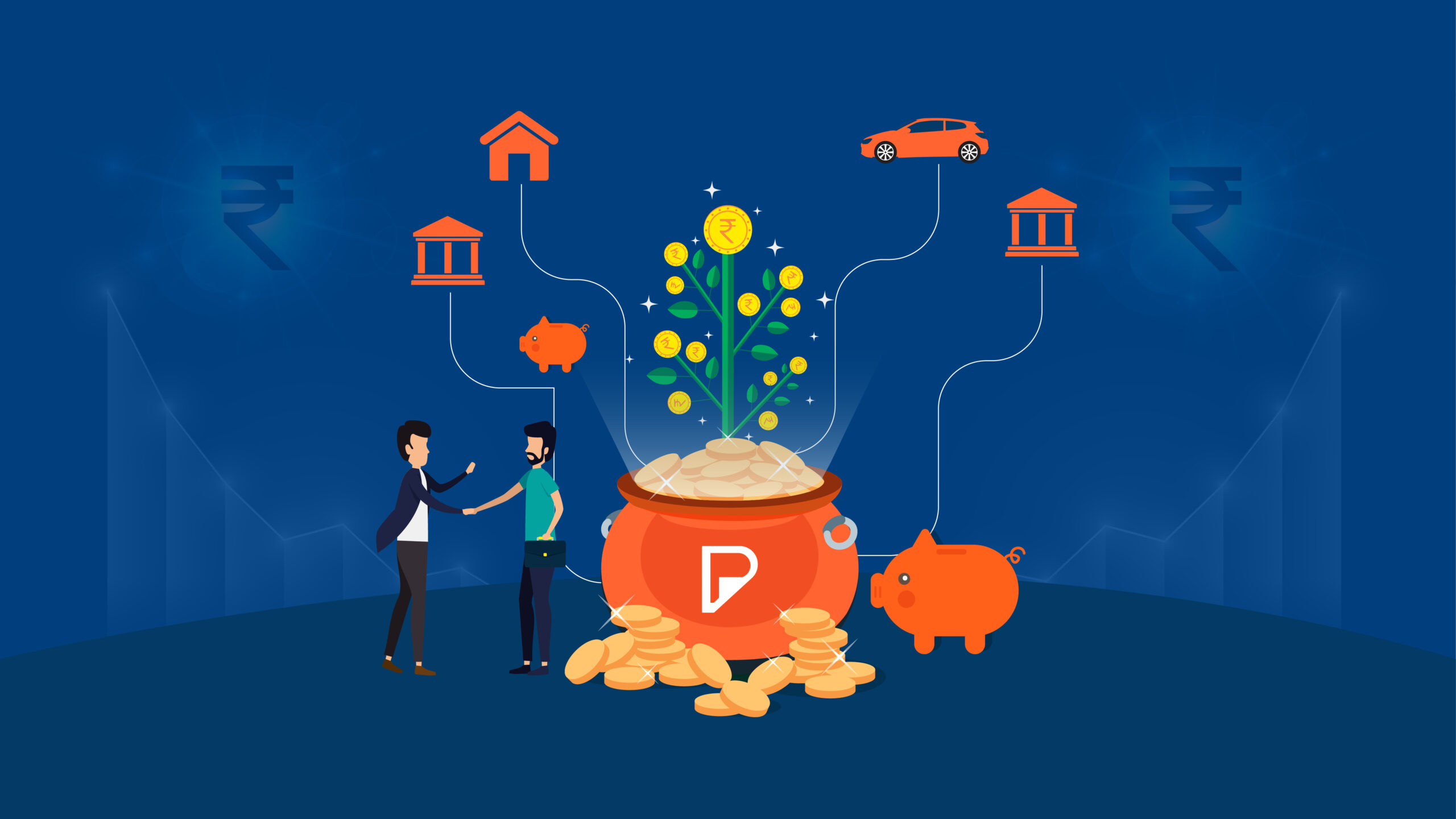
Choosing the right chit fund is both an art and a science. As a reliable financial advisor, I understand the importance of finding a savings solution that fits your budget while ensuring regulatory compliance, customer support, and financial inclusion. Digital chit funds combine the traditional rotating savings approach with modern technology benefits such as encryption and data security. This guide explains what chit funds are, how they operate, their benefits and risks, and how to evaluate providers. By the end, you will be equipped to select a chit fund that aligns with your financial goals—be it retirement, education, or a major purchase.
We will also compare various chit fund schemes with fixed deposits and mutual funds, and explain the legal regulations, interest rate determinations, and auction process behind them. Each section addresses a critical question to help you understand due diligence, risk management, and transparent analytics. Let’s explore how these traditional yet innovative tools can secure your financial future.
A chit fund is a rotating savings and credit association where a group of individuals contributes a fixed amount periodically into a common pool. The total sum is awarded to one member through an auction or lottery system. Key features include:
• Regular contributions and competitive bidding
• Rotation of receipts for each member
• Transparency and adherence to statutory guidelines
These funds enable disciplined savings and provide short-term credit without high-interest charges. Built on social trust and collective responsibility, chit funds allow participants to plan for expenses, manage emergencies, and invest surplus funds, while ensuring fairness and accountability.
In a typical chit fund, all members contribute an equal share at regular intervals. During each cycle, the pooled money is auctioned, and the member willing to accept the highest discount wins the bid. The discount acts as an interest-free loan benefit and a savings mechanism. Even after winning, members continue their regular contributions until everyone has received the fund. A fund manager oversees contributions, organizes bidding, and ensures compliance with legal and regulatory standards. This transparent process builds mutual trust and confirms the fund’s operational integrity.
Chit funds come in various types depending on their structure, organizer, purpose, and regulatory framework. Here’s a detailed breakdown of the different types of chit funds in India:
Each type of chit fund serves a different audience—from informal savers to formal investors. For safety, legal protection, and transparency, it is recommended to join registered and digital chit funds like myPaisaa, which offer a reliable and fully digital experience backed by regulations.
Investing in chit funds offers several advantages:
• Quick accumulation of a large sum for immediate needs
• Disciplined savings and access to interest-free loans via early receipts
• Higher liquidity compared to traditional saving methods
• Financial inclusion for small investors without collateral
• Strengthening of social ties and collective responsibility
For many, chit funds serve as a stepping stone to larger investments or a reliable emergency fund.
Despite their benefits, chit funds carry inherent risks such as:
• Fraud or mismanagement by unscrupulous agents
• Default risks if the fund manager fails to deliver
• Regulatory risks if guidelines from the Reserve Bank of India or state authorities are not followed
• Timing issues with the auction process that may disrupt financial planning
• Liquidity constraints and potential market fluctuations
A cautious approach and thorough due diligence are necessary to mitigate these risks.
When choosing a provider, consider the following factors:
• Reputation and a long history of successful operations
• Strict regulatory compliance with the Chit Act, 1982 rules
• Transparent fee structures with no hidden charges
• Efficient customer support and a secure, user-friendly digital platform
• Regular audits, detailed prospectuses, and proactive communication about fund performance
These factors ensure operational transparency and investor protection.
Due diligence is key. Verify providers by:
• Confirming registration with relevant regulatory bodies
• Analyzing financial statements and audit reports for operational health and liquidity
• Checking for a clear audit trail, transparent bid processes, and dispute resolution procedures
• Reviewing modern encryption and data security protocols
• Collecting feedback from current users regarding the provider’s customer service and responsiveness
This process minimizes risks and builds confidence in the provider.
Reputable providers can be identified through:
• Official websites of the RoC Board of State
• Financial media and expert review platforms
• Financial expos, seminars, or webinars discussing digital chit funds
• Specialized digital platforms and apps, such as myPaisaa, that provide detailed performance data and user testimonials
These sources help you compare and select providers that suit your investment objectives.
Effective comparison involves a side-by-side evaluation using key metrics such as fee structure, past performance, regulatory compliance, customer ratings, and digital usability. The table below illustrates a concise comparison:
| Provider Name | Regulatory Compliance | Fee Structure | Default Rate | Customer Rating |
|---|---|---|---|---|
| myPaisaa | Fully Compliant | Low | 0% | 4.7/5 |
| Provider B | Compliant | Moderate | 3-4% | 4.3/5 |
| Provider C | Pending Verification | High | 5% | 3.9/5 |
| Provider D | Fully Compliant | Low | <3% | 4.5/5 |
| Provider E | Fully Compliant | Moderate | 4% | 4.2/5 |
Use such tools to evaluate providers based on both qualitative and quantitative feedback to make an informed decision.
Interest rates in chit fund schemes are not fixed like in traditional loans or savings instruments; instead, they are determined dynamically through a monthly auction process. In each cycle, members of the chit group bid for the lump sum by offering the highest discount (or lowest bid) on the total chit value. The winning bidder receives the chit amount, while the discount is distributed among all members after deducting the foreman’s commission as a dividend. This mechanism indirectly sets the cost of borrowing and return for others.
If a member takes the chit early, it acts like a lump sum loan at a discounted rate—ideal for reinvesting in business or emergencies at a lower effective interest than bank loans. If won in the middle, it often feels like a zero-interest loan since dividends received over time may balance out the discount. For non-bidding savers who stay till the end, the average returns can be attractive — at myPaisaa, savers typically earn around 11.5%, making chit funds a flexible tool for both borrowers and investors.
The tenure of a chit fund defines the duration over which contributions and disbursements occur. It can range from a few months to several years, depending on:
• The number of participants
• Agreed periodic contribution cycles
A fixed tenure ensures regularity and planning accuracy, influencing liquidity and the overall return on investment. Understanding the tenure is essential, particularly if aligning the chit fund investment with major financial goals like home purchases or retirement planning.
The auction process determines which member receives the pooled funds each cycle. Every member contributes a fixed sum, and they bid by offering to accept a discount on the total amount. The highest discount bid wins, meaning the winner receives the pool minus their bid discount. This discount represents the cost of early access to funds and functions much like an interest rate. Modern digital platforms like mypaisaa now provide real-time updates, ensuring transparency and accountability throughout the bidding process.
Calculating returns in chit funds involves assessing the discount percentage won and the timing of the payout. For instance, winning early with a significant discount can result in a higher annualized return. Investors must also consider ongoing contributions after winning to determine their net return. Many providers offer online calculators that allow simulation of different bidding scenarios based on historical data, helping investors project yields and evaluate potential risks.
Chit funds operate under a strict legal framework to protect both organizers and investors. In India, the Chit Funds Act outlines the rules for registration, operation, and dispute resolution. This act ensures that all operations adhere to standards of disclosure, transparency, and accountability. The framework is designed to prevent mismanagement and provide clear legal recourse for defaults, thereby reinforcing investor trust.
The RoC sets guidelines to ensure financial integrity and operational transparency within chit funds. Key points include:
• Comprehensive disclosure of operating procedures
• Regular audits and clear communication with participants
• Requirement for fund managers to maintain a reserve or security deposit
Providers who follow these rules tend to offer superior customer service and risk management, making them a safer choice for investors.
Consumer protection is achieved through regulatory oversight, mandatory disclosures, and transparent operating practices. The Chit Funds Act, 1982 along with RBI guidelines, provides legal safeguards in cases of default or mismanagement. Regular audits, clear documentation, and the use of secure digital platforms further enhance protection by enabling real-time tracking of contributions and bids. These measures ensure that investors’ money is protected and that grievances can be effectively addressed.
Chit funds and fixed deposits serve different financial needs. Fixed deposits offer guaranteed, fixed interest rates and high security, though they lack flexibility in liquidity. In contrast, chit funds provide dynamic returns through a competitive auction process and offer faster liquidity. The choice between the two depends on your risk tolerance, need for immediate funds, and investment horizon.
Mutual funds provide diversification and professional investment management with market-linked returns, but they also carry higher management fees and market risks related to stocks or bonds. Chit funds, being simpler and based on group discipline, offer predictable returns with lower fees if managed well. The trade-off is between diversification and the straightforward, community-focused mechanism of chit funds.
Real estate requires significant capital, long-term commitments, and is affected by market fluctuations and location-specific factors. Chit funds, in contrast, are more accessible with lower capital requirements and offer immediate liquidity through regular auctions. They are suitable for investors seeking quicker cash access without the complexities of property management. While real estate may yield capital appreciation, chit funds provide a more structured and flexible savings mechanism.
Chit funds can build a steady corpus over time for retirement planning. Regular contributions coupled with a timely lump sum receipt allow you to reinvest or cover retirement expenses. Evaluating the scheme’s tenure, expected returns, and provider reputation is vital to ensure consistent payouts that align with your retirement timeline. This disciplined approach complements traditional retirement products and enhances financial security.
For education expenses, chit funds offer flexible contributions and timely lump sum availability. This approach allows you to accumulate funds gradually and access them during critical periods such as admissions or tuition fee payments. A scheme with a tenure that aligns with educational milestones helps to mitigate rising education costs and provides the funds needed when opportunities arise.
Chit funds can be an effective method for saving toward major expenses like a home purchase. Regular contributions help build a significant savings pool, and early receipt of funds can be used as a down payment or to negotiate better financing terms. Choose a scheme with favorable bid discounts and a solid track record to ensure that you receive the funds when needed while continuing disciplined savings thereafter.
Comparison tools simplify the evaluation of multiple chit fund providers. They allow you to compare key metrics—such as fee structure, historical returns, regulatory compliance, and customer ratings—in an easy-to-read format. Interactive charts and real-time data help you understand discount fluctuations and effective returns, guiding you to make an informed choice that suits your financial goals.
Expert reviews are available on financial advisory websites, government regulator portals, and specialized fintech platforms. These sources provide customer testimonials, detailed case studies, and performance metrics. Additionally, online financial blogs and forums offer peer insights and real-world experiences that can supplement your research and enhance your confidence in a provider’s reliability.
Q: What makes digital chit funds different from traditional chit funds? A: Digital chit funds are managed online, offering real-time tracking, automated updates, and robust data security protocols. These features reduce manual errors and improve transaction speed and customer support.
Q: How can I be sure that my chit fund provider meets regulatory compliance? A: Verify compliance by checking the provider’s registration with the RoC. Reputable providers also publish audit reports and operational histories, and user reviews further attest to their regulatory adherence.
Q: What is the typical duration of a chit fund scheme, and why does it matter? A: Chit fund schemes typically last from a few months to several years, depending on participant numbers and contribution cycles. The duration affects liquidity, effective yield, and overall alignment with your financial goals, whether for retirement or education.
Q: Are there any hidden fees or risks associated with joining a chit fund? A: While established providers strive for transparency, hidden fees such as administrative charges may affect net returns. Always review prospectuses and regulatory disclosures to understand risks like default or mismanagement.
Q: How do I calculate the effective returns from a chit fund? A: Returns are determined by the discount percentage won and the timing of the payout, adjusted for the number of cycles remaining in the scheme. Online calculators provided by many companies can help simulate various scenarios based on historical data.
Q: What are some practical tips for using a chit fund to achieve major financial goals? A: Plan withdrawals in line with your timeline, evaluate schemes with strong auction trends and regulatory backing, and consider diversification across multiple funds to balance immediate needs with long-term savings.
Q: Can I use multiple chit fund schemes simultaneously for diversification? A: Yes, employing multiple schemes can diversify risk across providers and tenure types, managing liquidity better and mitigating the impact if one fund faces operational challenges.

Chit funds uniquely blend traditional savings with modern financial technology to address diverse investment needs. By understanding the operational mechanics, evaluating provider credibility, and comparing alternatives like fixed deposits, mutual funds, or real estate, you can tailor your financial strategy effectively. This guide has provided essential insights—from regulatory frameworks to calculating returns—equipping you with the knowledge to confidently integrate digital chit funds, such as those offered by myPaisaa, into your portfolio. With informed decision-making and careful due diligence, you can secure a flexible, innovative savings strategy that supports your future prosperity.






Comments (No Responses )
No comments yet.